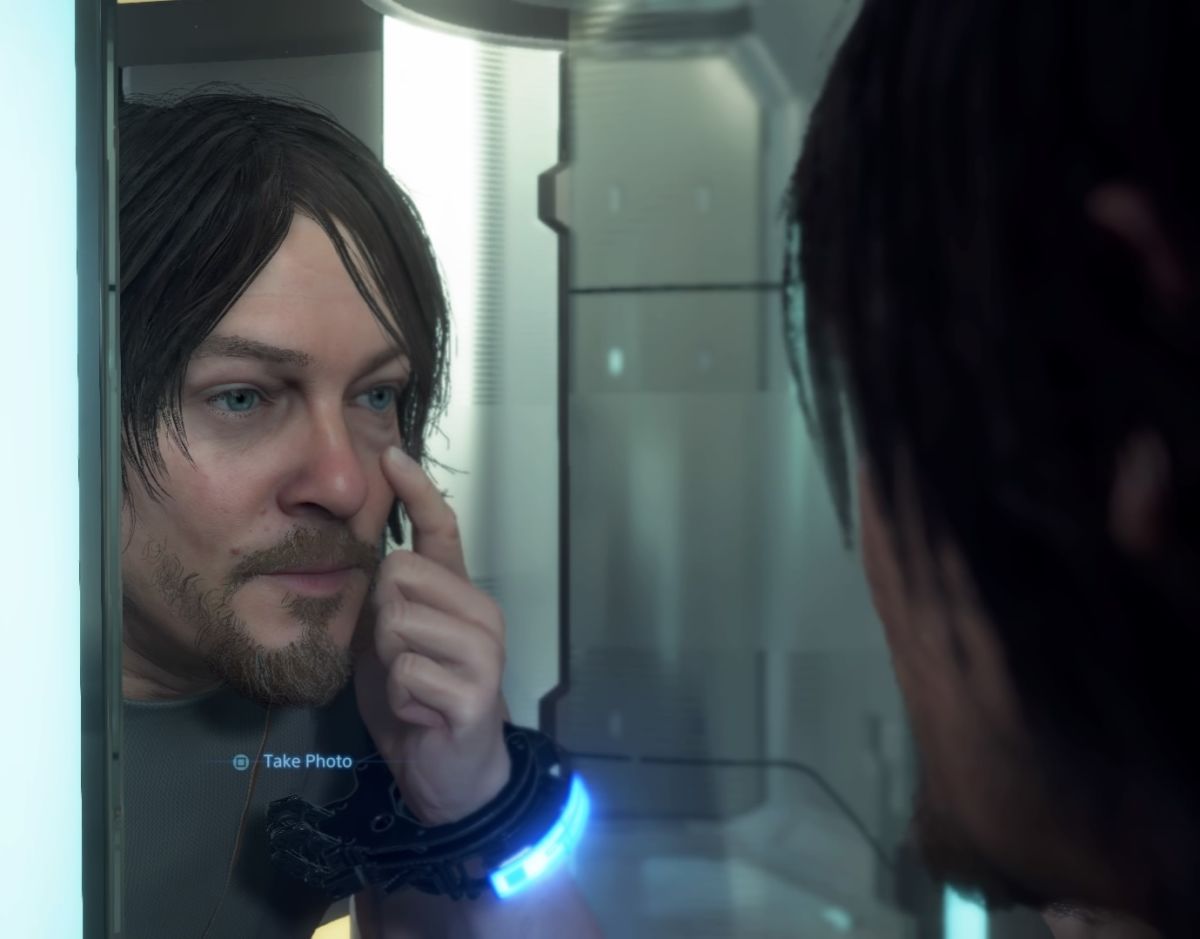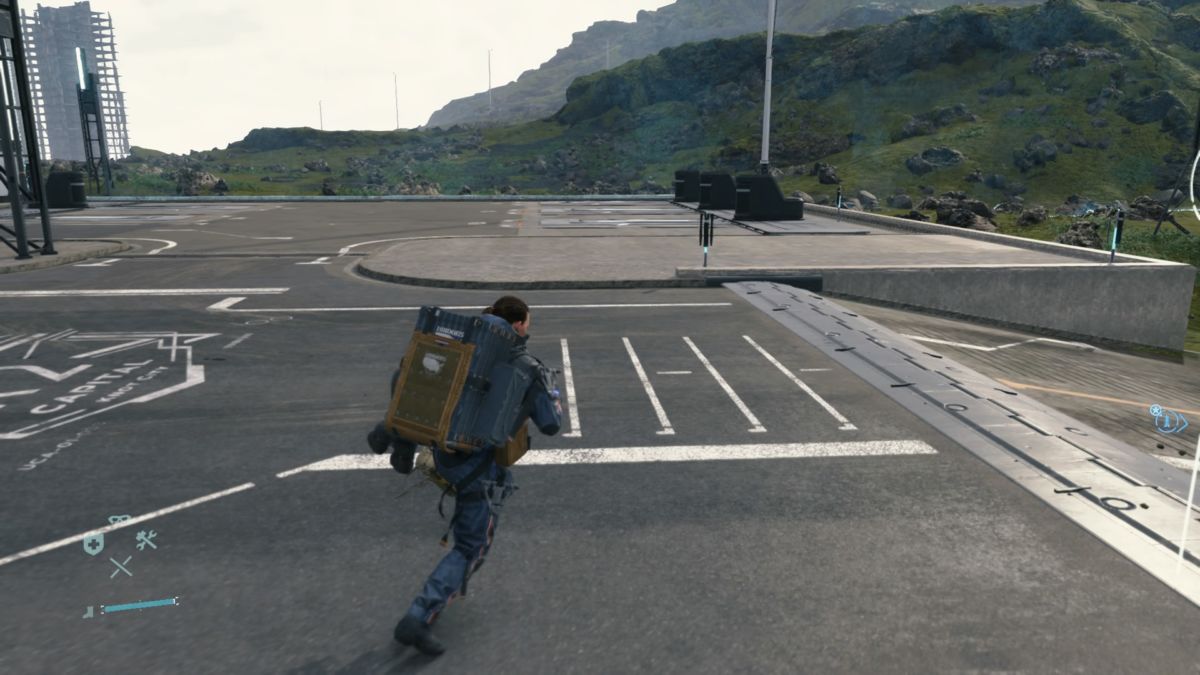
There’s nary a game in recent history that has garnered as much interest, and generated as much as buzz outside of Rockstar, than Death Stranding, the new game from Hideo Kojima. For years, Kojima has teased and released snippets of the game, leaving everybody wondering until the week of its release – what the hell is this? Does it live up to Metal Gear Solid? Well, Death Stranding is finally here. So, is it any good? Well, unfortunately no, but it has its moments.
The game’s plot has been shrouded in secrecy for that long it’s impossible to actually describe it until you can physically play it. Bar some incomprehensible cutscene footage at E3 and other expos, featuring Guillermo del Toro and Mads Mikkelsen (more on those later) no less, we had nothing really to go on. After dozens of hours of playtime, frankly it’s still nigh-on impossible to describe what’s actually going on concisely.
In summary, Death Stranding is about a near-future America that has suffered a cataclysmic event, the Death Stranding, and society has broken down to the point where nobody trusts each other. Democracy is dead and the fate of mankind looks all but doomed. So far, so very post-apocalyptic. However, there are also the BTs, which are spectral, ethereal-like beings that look like white noise (only black in colour), tied to the sky via umbilical cords that try to drag you down beneath the earth if you get too close to them. They can be destroyed with your poo. Also, the rain is trying to destroy your stuff. And there’s a baby that can sense the BTs coming and it never stops crying and you need to take care of it by rocking it with your controller (always at the worst possible time). Oh, and you have to deliver some cargo now and then. It’s your standard delivery man with creepy ghosts and babysitting game featuring Daryl from The Walking Dead, essentially.
The game really is about cargo, and more importantly, what you do with it. The whole game revolves around the delivery of cargo from location A to location B. If it sounds dull, that’s because, on the whole, it is. To say you’ll get any of the same thrills you got playing any of Hideo Kojima’s previous Metal Gear Solid games would be lying. It is very niche. If Metal Gear Solid was the Marvel Cinematic Universe, for example, Death Stranding is David Lynch having a crack at remaking 2001: A Space Odyssey. It’s bold and it’s weighty and it makes no sense whatsoever. It’s a tough sell to say the least. The gameplay does become more varied later with some driving and shooting sequences, but it’s mainly cargo. It’s all about that cargo.
This tough USP isn’t helped by the game’s prologue. Like with the aforementioned Metal Gear Solid series, Kojima can’t help himself when it comes to cutscenes. You will easily spend most of the first 2 hours or so just watching the game rather than playing it. The pacing is glacial, and for your average player this is going to be hugely problematic with today’s high octane thrills on offer elsewhere. You are also bombarded with that much confusing plot and exposition in the game’s opening that if you can make immediate sense of it, you’re a smarter person than I. The small pockets of time that you do get to actually play the game are also hampered by a nightmare set of menus and controls that your average gamer will no doubt find off-putting.
So far, not so great. However, there are a few moments of inspiration to admire. After a dull opening act, the game starts to open up a bit more. The delivery aspect does not dramatically change— this is the whole game, make no mistake, but you will oddly start to care about your cargo and deliveries. Characters are a little more fleshed out and teased. Your character, Sam Porter Bridges, is very likeable to give Kojima his writing-due (and played exceptionally by Norman Reedus aka Daryl from The Walking Dead). Mads Mikkelsen’s Cliff is always in the background begging questions, while Guillero del Toro’s Deadman is a handy expositor to help you through your initial deliveries.
You’ll also care about your deliveries because the game’s overall message is overwhelmingly positive. This is easily where Death Stranding has something going for it. Where nearly every game nowadays is seemingly all about shooting and killing your fellow man, Death Stranding is about bringing people back together. It is really commendable that a AAA game in today’s market is willing to do something so against the norm. Your fellow players also really help in adding to this positive theme of reconnection.
Death Stranding is a single player game, but other players online can leave items across the landscape to help with your deliveries, leave warning signs about BTs being nearby and the like. One section had me going to deliver cargo to a wind farm over a tough, mountain-filled bit of terrain that was crawling with BTs. After an arduous ordeal to escape, with BB constantly crying and stressing me out throughout the attack, it was to my surprise that on the way back down the mountain, there were ladders and bridges everywhere. They were all crafted and left by other players to make my descent back down the mountains easier. It was such a wonderful feeling and a genuinely heart-warming experience to play. It’s just a shame that there weren’t more elements like this throughout.
Traversing this harsh terrain isn’t a simple as holding up or down on the left analog stick, however. How you move is dictated by how much you’re carrying. The oft-mentioned cargo isn’t just a simple box you carry, either. The size of your cargo will depend on the deliveries you accept and will weigh you down accordingly. Your gear as well — from your boots, to your foldable ladders, to your minor weaponry — all take up space on your person. It’s up to you to decide how to stack it on you (or, if you’re a bit lazy like me, pressing triangle on the cargo sorting page will optimise it best for you, automatically) to make your trip to your destination as seamless as possible.
Once you’ve sorted your cargo, it’s then off out into the world to physically go and deliver it. I cannot stress enough how important the L2 and R2 buttons become, as these balance you out, literally tipping you left and right, as you walk over the uneven ground of Death Stranding’s United Cities of America. You could simply just hold L2 and R2 the entire time to keep yourself perfectly balanced, but this will slow you right down when walking. So occasionally stumbling and balancing yourself out is essential if you want to get anywhere in decent time.
The game’s menus offer a wealth of information but can become unwieldy and a pain to navigate at times. Trying to equip stuff as well can be cumbersome until you’re used to the game’s controls. It is a mean learning curve, but becomes more palatable as you play. One other bugbear is the erstwhile BB. Keeping BB satisfied can become an annoying side task that the game could well do without. Its constant crying, especially during BT attacks, does not help the situation at all. Of course, it’s there for ratcheting up the stress levels of the player but I just found it severely irritating and wanted to throw the little blighter for 6 every time.
Elsewhere, there are some elements of stealth to enjoy in the form of dealing with Mule camps. Mules are essentially the game’s bandits that try and steal your cargo and there are certain missions that involve sneaking into their camps and stealing cargo back. These stealth sequences invoke those Phantom Pain memories nicely, and do offer a small break from the constant “get this cargo from A to B” missions. They’re simple enough to complete, but they do offer a chance to be a bit creative with how you dispatch them non-lethally (for the most part).
There are also several collectables scattered throughout your map. They all link into the plot as you’d naturally expect, helping you get better gear and advancing the story. One aspect that is a bit unique, if unnecessary, is that of simply going to the toilet. Whenever in your private quarters, going for a shower, or urinating or defecating, actually enables you to craft grenades to deter the BTs, with each one having a differing effect on the creepy, black goo-dwellers. Say what you will about Death Stranding, it’s certainly not generic. However, these constant little additions feel like ideas that Kojima had mid-way through production and thought, “yeah, stick that in too!” They add to the game’s identity, but do I really need to craft weapons out of my bodily fluids?
There are also some egregious examples of in-game advertising that do not sit well at all. The previously mentioned toilet visits handily censor Sam with adverts for Norman Reedus’ AMC show Ride with Norman Reedus. I’m unsure if this was a meta in-joke but either way it didn’t work for me. And the Monster energy drinks tie-in is groan-inducing. The advertising took me out of the game rather than making it feel more authentic.
One infallible part of Death Stranding is its visuals, out in the game’s open world as well as the cutscenes. This is a seriously beautiful game and nobody can deny it that. Facial animations, and the quality of acting from Norman Reedus, Guillermo del Toro, Mads Mikkelson and Lindsay Wagner, are A+. It’s Death Stranding’s biggest strength by far. Environments look breathtaking, too. It may be a sparse landscape, but my word it’s stunning to look at. There were moments where looking at the sights of the United Cities of America while out on delivery, as one of the game’s many specially recorded songs from the soundtrack kicked in, that were awe-inspiring.
Death Stranding is one of the most difficult games to describe, get in to, and ultimately fall in love with. While the story, is, for all intents and purposes, a mess, it’s to be applauded that its overarching message is one of hope and genuine positivity. We really do need each other, as cliched as that sounds, and it’s nice to lose yourself in a story that is about reconnection, rather than killing and division. There is a lot to love about Death Stranding, it’s just whether players are willing to slog through the strains of fetch quests and collect-a-thons in the process to get to these moments of genuine satisfaction.
A PS4 key was provided by PR for the purposes of this review.
Some of the coverage you find on Cultured Vultures contains affiliate links, which provide us with small commissions based on purchases made from visiting our site.










